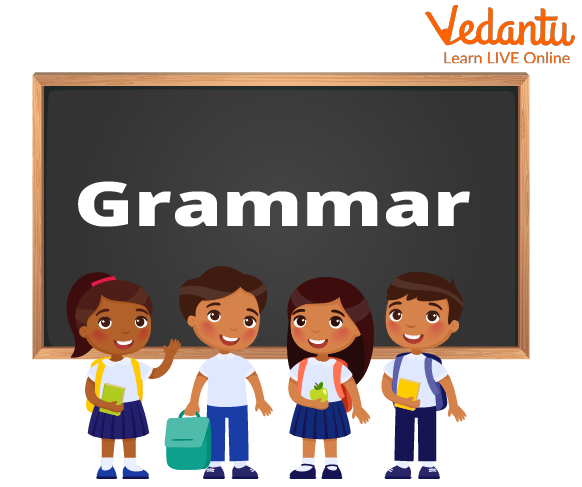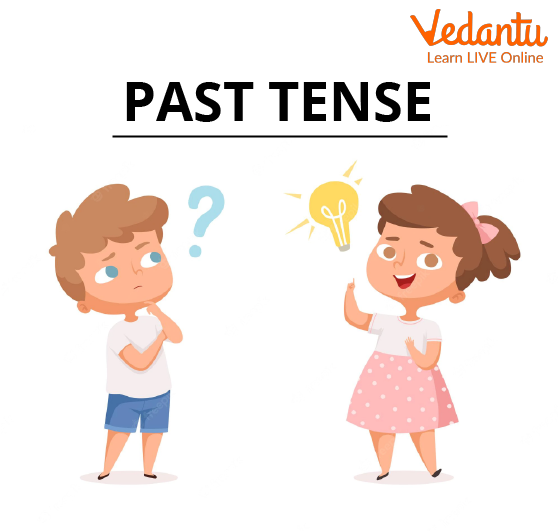Class 8 The Tense English Grammar - Importance of English Grammar for Class 8 Students
English Grammar for Class 8 The Tense is basically the study of grammar to excel in the English language. Thus, the students must take English Grammar as one of the core subjects quite seriously. Also, students who are further attempting to study for masters and higher education in the English language must not fuss with this subject at their basic levels. In these classes, learning effective grammar will take a student on a long career development path.
In this article, we will be studying Class 8 The Tense English Grammar and we will be notifying you about the topics that are included in the Class 8 th English Grammar Syllabus 2023-24. Students must note that we are discussing the general syllabus for Class 8 The Tense English Grammar, you must once cross-check with your own respective school’s or board’s syllabus for 2023-24.
English Grammar for Class 8 The Tense Download Free PDF
In today’s lesson, we will discuss the essential topic of English grammar, which is “the tense”. The tense of a sentence denotes the time when an action has taken place. Tense is a category used in language to communicate time reference. The employment of various verb tenses, particularly in their conjugation patterns, frequently indicates a tense. The past, present, and future are the three basic tenses that can be found in various languages.

Introduction to English Grammar
Tenses
When something happens in the past, present, or future, it is shown by a form of a verb which is known as Tense.
Present tense denotes an action happening in the present. The verbs are said to be in the present tense.
Past tense denotes an action that has already happened in the past. The verbs are said to be in the past tense.
Future tense denotes an action that will/ might happen. The verbs are said to be in the future tense.
For example
Past: She went there.
Present: She is going there.
Future: She will go there.
Types of Tenses

Types of Tenses
1. Simple Tense
Present Indefinite Tense/ Simple Present Tense
A tense that expresses an action that is currently happening is known as the Present tense.
Simple present tense denotes an action that happens regularly. They are also called the present indefinite tense.The sentence structure is Subject + Verb (s/es) + Object.
For example, she sings.
She exercises daily.
The simple present tense is used when the action occurs daily, weekly, monthly, or always in the present tense.
Past Indefinite Tense/ Simple Past Tense
The simple past tense in English is used to describe actions/events that happened in the past. Many verbs form the simple past tense by adding "ed" or "d" to the end of the base verb. However, other verbs behave differently and are spelt differently when used in the simple past tense.

Past Tense
A tense that expresses an action that has already happened or existed is known as the Past tense.
Simple past tense talk about an action that happened in the past.The sentence structure is Subject +Verb + Object.
For example, my sister saw a movie yesterday.
For example,
Last year I travelled to France.
Future Indefinite Tense/ Simple Future Tense
A tense that expresses an action that will happen in the future is known as the Future tense.
The future simple tense is a tense that expresses an action that will take place in the future. One fact to remember is that simple future-tense actions begin and end in the future tense. Practice Questions, answers, and the meaning of the difficult words have been discussed in the end.
Simple future tense talks about an action that will happen in the future.
For example, I will learn a new language.
I will start my studies.
2. Continuous Tense
Present Continuous Tense
The Present Continuous Tense is the form of tense that denotes an action that is ongoing or happening in the present, or currently.
It is also called the present progressive tense because they represent the action that is progressing in the present.
Present continuous tense denotes an action happening continuously in the present.
The sentence structure is Subject + is/am/are + Verb I + ing + Object.
For example, He is playing.
She is dancing.
Sita is studying.
Past Continuous Tense
Past continuous tense denotes an action that had continuously happened in the past.
The sentence structure is Subject + was /were + Verb + ing + Object
For example, She was cooking food for me.
Ronit was studying when I went to his room.

She was Dancing
Future Continuous Tense
Future continuous tense denoted an action that will happen continuously in the future.
The sentence structure is Subject + Will / Shall + be + verb + ing + object
For example, i will be reading this book.
He will be playing for the Indian cricket team.
3. Perfect Tense
Present Perfect Tense
Present perfect tense denotes actions that happen in the past but have a relationship with or continue in the present.
The sentence structure is Subject + Has/have + Verb + Object.
For example, She has learned making Italian food.
She has read all the biographies of Indian cricketers.
Past Perfect Tense
Past perfect tense talks about actions that happened in the past and having a relationship with another action that had already happened in the past.
The sentence structure is Subject + Had + Verb + Object.
For example, She had cooked the food.
He had read those books.
Future Perfect Tense
Future perfect tense talks about actions that will happen in the future and has a connection with the past event.
The sentence structure is Subject + Will have/ Shall have + Verb + Object.
For example, He will do it.
He shall have noticed that earlier only.
4. Perfect Continuous Tense
Present Perfect Continuous Tense
Present perfect continuous tense denotes action that was happening in the past but has a relationship with or continues in the present.
The sentence structure is Subject + Has/Have + been + Verb + ing + Object.
For example, She has been a council member of her school for the last 3 years.
She has been reading about this for a long time.
Past Perfect Continuous Tense
Past perfect continuous tense talks about actions that were happening in the past and having a relationship with another action that had been happening in the past.
The sentence structure is Subject + Had + been + Verb + ing + Object.
For example, She had been cooking the food for us.
He had been playing for the Indian cricket team.
Future Perfect Continuous Tense
Future perfect continuous tense talks about actions that will happen in the future and will be continuing in the future.
The sentence structure is Subject + Will/Shall + have been + Verb I + ing.
For example, She will have been waiting for us.
He will have been arranging things for us.
Difficult Words with Meanings
Word | Meaning |
Discuss | Discourse |
Engaged | Busy in something |
Elaborate | To explain in detail |
Punctuation | This is a tool used in writing. Like space, commas, full stops, exclamation marks, etc. |
Progressive | Developing |
Summary
In this chapter, we started with the definition of tense. A sentence's tense indicates the time at which an action occurred. The tenses are the most important component of the English language. If you want to form a proper sentence or interact with someone, you must utilise the correct tenses to express your views. The tenses in English are used to express the three main temporal divisions of Past, Present, and Future. The statement or inquiry will convey the opposite of what you meant to say or write if you don't use the tense that best portrays the issue. The use of the appropriate verb form and auxiliary is implied by the use of the correct tense.
Practise Questions
1. Fill in the blanks with the verbs in the appropriate tense
The Principal ____(ask/asking/asked) to speak to Raj.
The Earth ____(revolves/revolving/revolved) round the Sun.
She ____ (read/reading) a book.
The teacher ____ (tell/told/telling) the boy.
Amy _____ (deliver/delivered/delivering/will deliver) a lecture on neutrons on Wednesday.
2. Identify the tenses of each sentence
The peacock was dancing.
She will come here for the dinner.
He worked hard to become the rank holder.
He is coming for dinner.
They will be playing cricket.
The doctor told her to eat an apple daily.
Answers:
1. Fill in the blanks with the verbs in the appropriate tense
The Principal asked to speak to Raj.
The Earth revolves around the Sun.
She read a book.
The teacher told the boy.
Amy will deliver a lecture on neutrons on Wednesday.
2. Identify the tenses of each sentence
The peacock was dancing. (Past Continuous Tense)
She will come here for the dinner.(Simple Future Tense)
He worked hard to become the rank holder (Simple Past Tense)
He is coming for the dinner. (Present Continuous Tense)
They will be playing cricket. (Future Continuous Tense)
The doctor told her to eat an apple daily.(Past Perfect Tense)
NCERT Solutions - Class 8 The Tense Grammar Solution
NCERT Solutions for English Grammar serves as a comprehensive solution book for the students of Class 8 The Tense who are willing to expertise in the English Grammar subject.
The Class 8th English Grammar syllabus is comprehensively mentioned in this NCERT Solutions. Exhaustive Class 8 Grammar topics are present in the NCERT Solutions. Also, this is to ensure that students from any board can refer to the NCERT Solutions for English Grammar Class 8 The Tense.
















